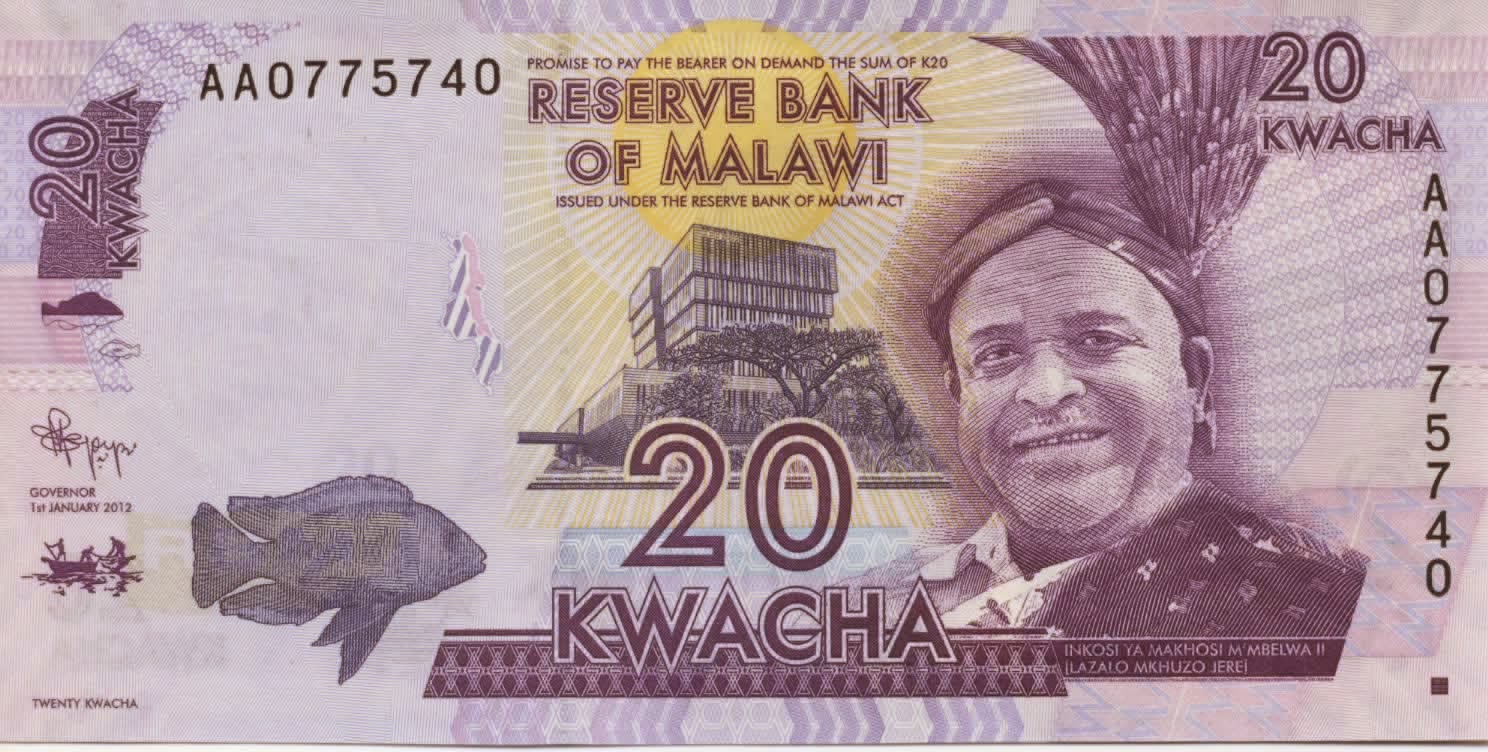SUB
A TOTALLY AMATEUR BANKNOTE COLLECTOR
Sunday, 23 March 2014
MALAWI DISCOVERED AGAIN
This note was actually found down the back of my sofa !!! it must have slipped out of a batch of notes I had bought. The amazing thing is that it is still in pristine condition.
I'm being a bit lazy but here's how the reserve bank of Malawi describes this note:
The front;
Inkosi Ya Makhosi M’mbelwa II – Lazalo Mkhozo Jere (K20 banknote)
Lazalo Mkhuzo Jere (1902 – 1959). He went to school at the Free Church of Scotland Mission station of Loudon or Embangweni between 1915 and 1920. He was installed as Paramount Chief of the Northern or Jere Ngoni in 1928. His thirty-one years on the throne saw him emerge as a development conscious leader, and he was to go down in history as the most powerful and fearless king the Jere Ngoni have had since they settled in northern Malawi in the mid nineteenth century.
M’mbelwa II endeared himself to his people by his cultural sensitivity and taste. This is because at a time of creeping westernization in dress and mannerisms, he took pride in being dressed with a touch of tradition: a colourful toga thrown over his shoulders and a headdress which spotted a plume (uluvi).
He effectively lobbied for the establishment of the Kasitu Valley Milk, the Ghee Cooperative Society in 1948 and the development and exploitation of the natural resources in the Viphya Plateau. The latter resulted in the launching, with the assistance of the Commonwealth Development Corporation, of the Viphya Tung Plantations Project in 1952.
He led his people to oppose the imposition of the Federation of Rhodesia and Nyasaland in the early 1950s. He established auxiliary schools for the poor in 1957 based on the Ghana model and provided scholarships to the needy under the M’mbelwa Bursary Scheme. In the late 1950s, he mobilised the people of Mzimba District to rally behind the Nyasaland African Congress leader Dr. H. Kamuzu Banda, and the movement for national independence. He was one of the five Chiefs who went to protest against the imposition of the Federation of Nyasaland and Rhodesia in 1953 at Lancaster House, United Kingdom in 1953.
M’mbelwa II died after a short illness, of diabetes, in 1959. He was mourned in grand style by the Ngoni from Mzimba, Ntcheu and Chipata in Zambia; as well as leaders and friends of Nyasaland African Congress from all parts of the country.
and the reverse;
K20 note
The back of the K20 banknote has the Machinga Teachers Training College in Machinga representing the theme of Social Development (sub theme Education). Next to the motif is a pile of books and a graduation cap symbolising availability of learning materials and high levels of education, respectively.
More on Malawi here
FRENCH ANTILLIES (FRENCH WEST INDIES)
The French Antilles or French West Indies, are made up of 7 territories under French sovereignty - Guadeloupe and Martinique (french overseas territories), Saint Martin and Saint Barthelemy (French overseas dependencies) and the three island dependencies of Guadeloupe - Les Saintes, Marie Galante, La Desirade. The french Antilles issued its own currency from 1961 until 1975 when the French currency took over and presently it uses the Euro.
Monetary unit : 1 Franc = 100 Centimes
I have been trying to get this note for ages but most people want stupid money for it but i managed to get this one within my price range.
It is a 10 franc note from 1964 (ND) . the front has a a woman with the shoreline behind her and the reverse has a banana harvest with people harvesting in the foreground and a factory in the background.Again the French go for a really artistic note with beautiful colours.
** wikipedia seems a bit confused as to whether French Guiana is included in the currency but as you can see in the scan it says - from top left- the departments of Guadeloupe, Guyane and Martinique.
See also FRANCE , GUADELOUPE, MARTINIQUE
Labels:
franc,
French Antilles,
french Guiana,
french west indies,
guadeloupe,
martinique
DANZIG
The Free City of Danzig was created by the treaty of versailles which lasted between the two world wars. It was made up of the city of Danzig - today called Gdansk - and 200 towns in the area surrounding the city. Previously it was part of Prussia , West Prussia and the Weirmar Republic and existed between 1920 and 1939. The city was administered by the local nazi party from 1933 until 1939 when the Yalta conference decided it should be part of Poland.
Monetary Unit: 1 Mark = 100 pfennig
The Notes above are the emergency money issued in 1919 as the city state was being set up and was issued by the city council.
The notes are the 50 and 10 Pfennig notes and both are uniface.
see also Poland and Germany
Subscribe to:
Comments (Atom)







